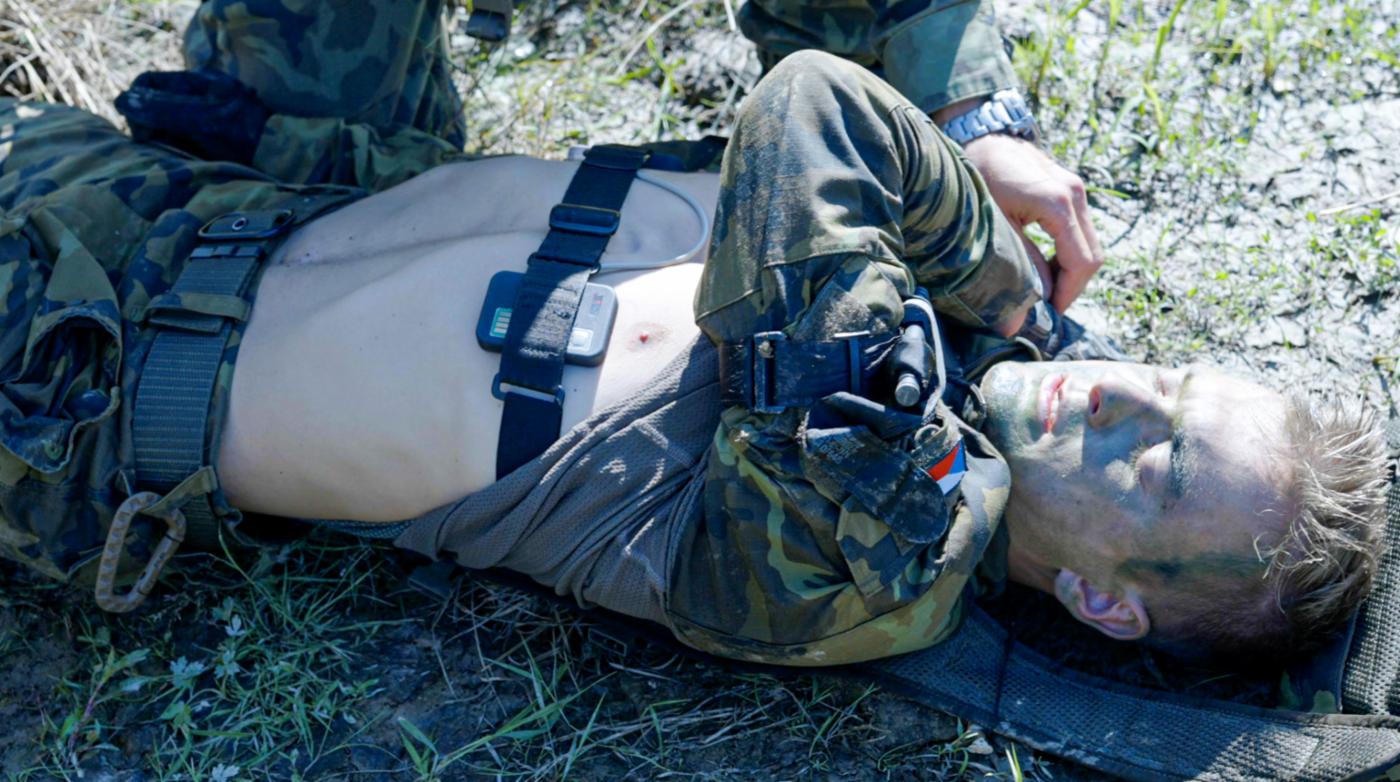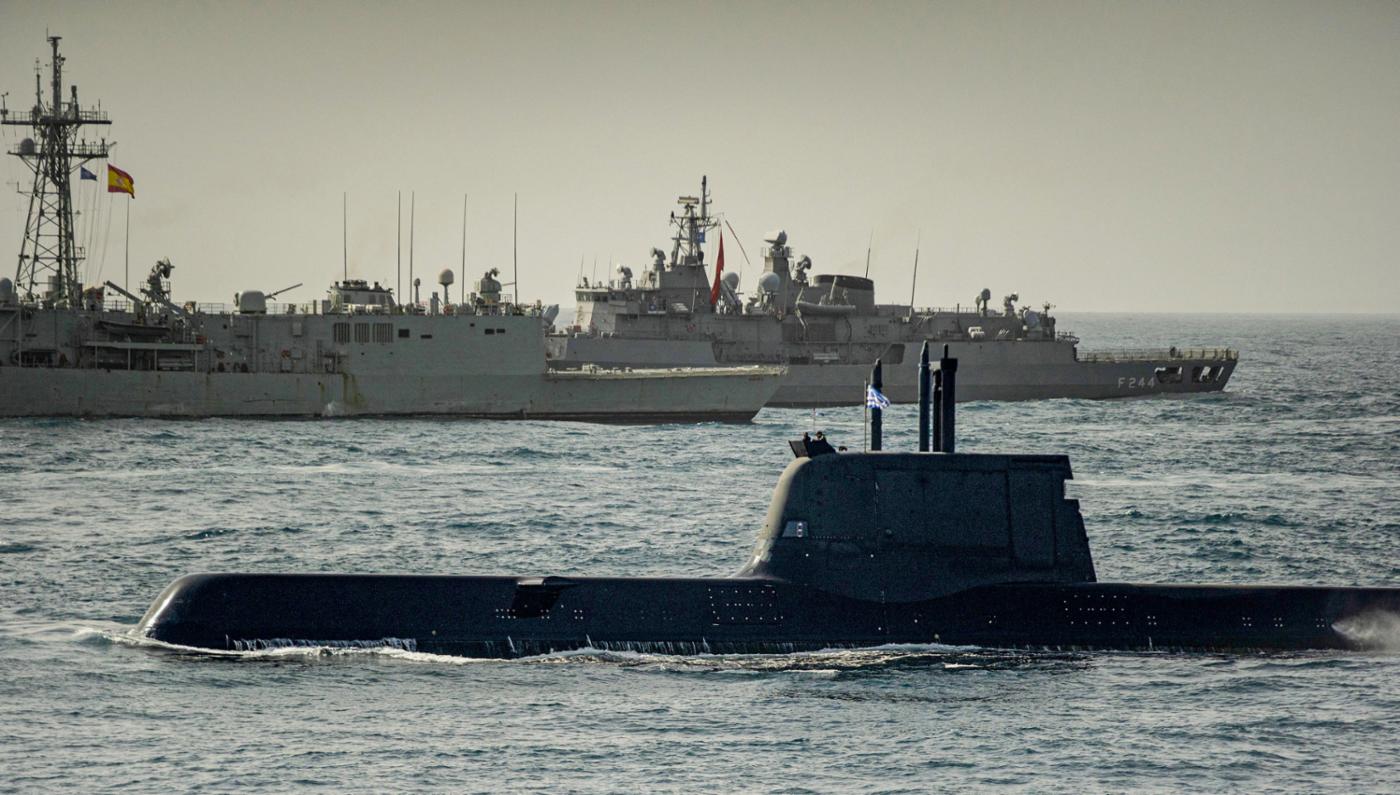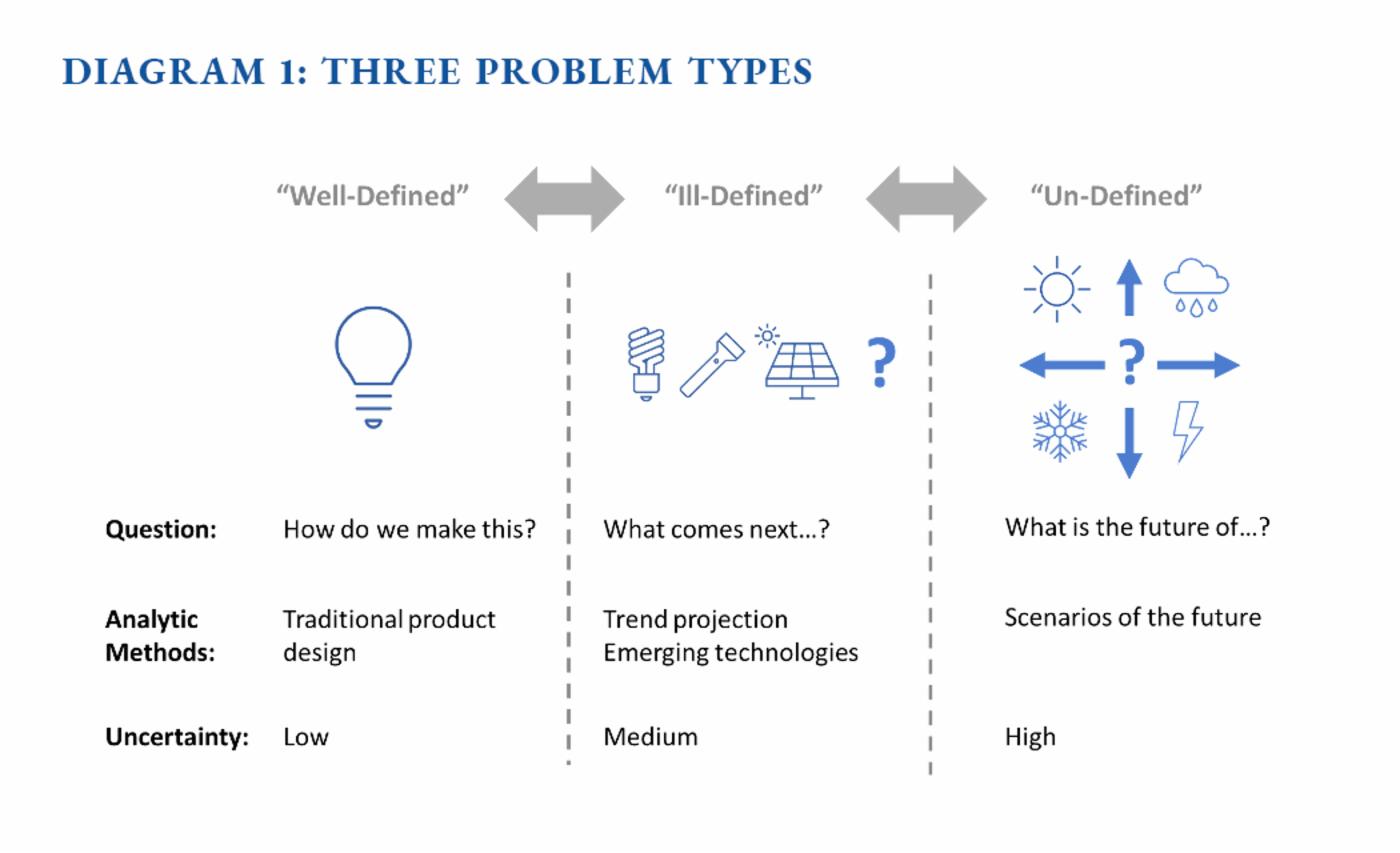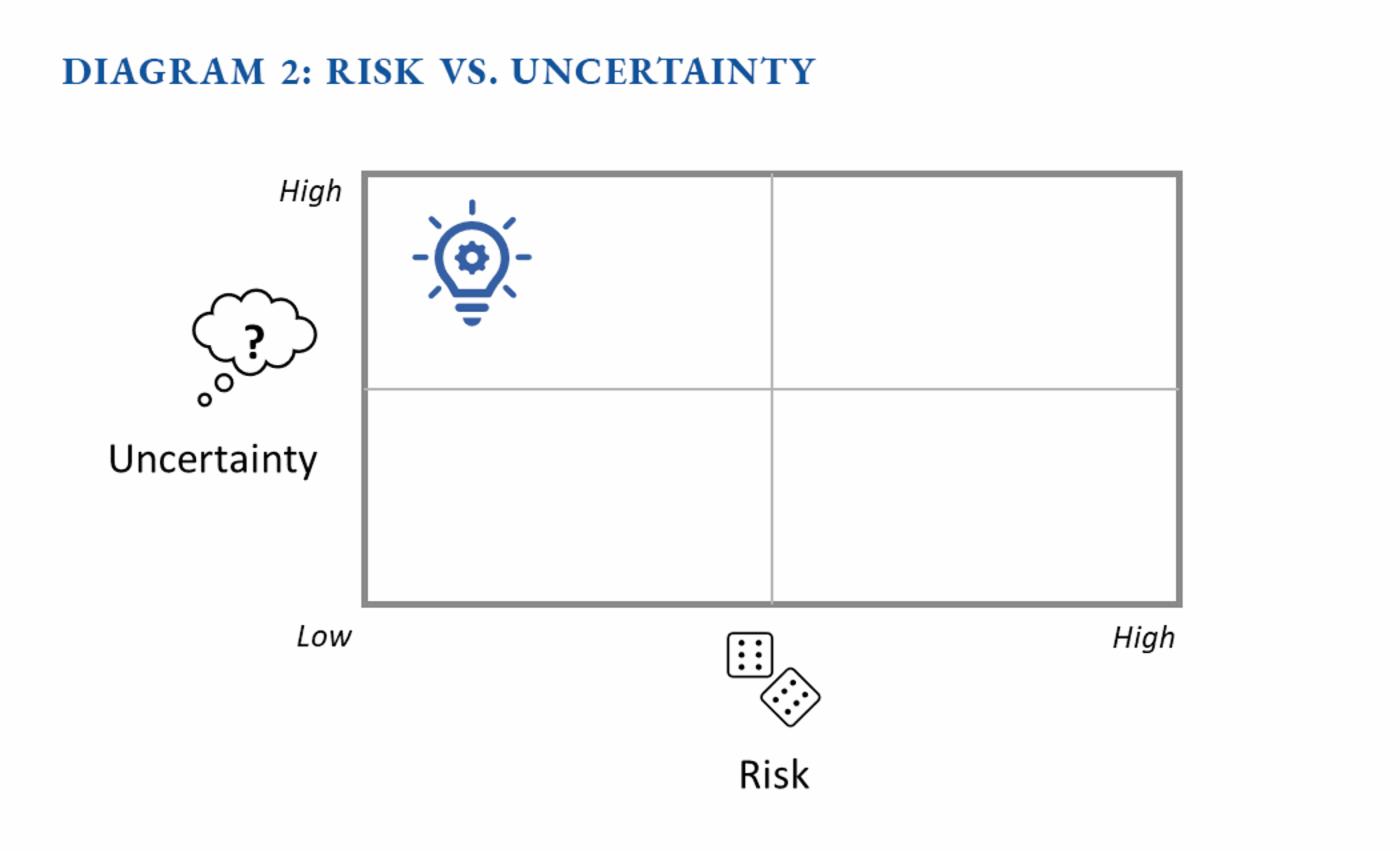How do innovators get better at anticipating and preparing for problems in the future? Most innovation efforts focus on problems in the present — ones that are easy to identify and thus to justify investing in (e.g. how do we make an airplane fly higher, or faster, or with fewer carbon emissions?) But focusing on the present can leave us unprepared for problems that may come in the future. It is equally valuable for innovation efforts to look beyond the present and to prepare for disruptions yet to come.
This article describes a structured innovation process to do this. It has been used by students at Johns Hopkins University and its partner institutions to create innovative solutions to unanticipated problems that have earned the attention of militaries across NATO, as well as coverage by CNN and the Washington Post.
The innovation process at work
NATO’s Allied Command Transformation (ACT) engages Johns Hopkins students to work on innovation challenges as part of its Innovation Hub. In late 2019, its Medical Branch asked a small team of undergraduate engineering students: “What is the future of combat medicine?” This was an especially difficult challenge because it did not ask how to address a known problem or present need. Instead, it asked about possible needs or problems that might arise in the future, and the future is, of course, unknown.
At Johns Hopkins, engineering students are prompted to categorise problems according to their level of definition before they begin their work. The problem types are “well-defined”, “ill-defined”, and “un-defined”. This is the first framework of the structured innovation process. The distinction is important because different types of problems require different kinds of thinking and different kinds of tools to address them (see Diagram 1).
Well-defined problems have clear requirements and their solution, when found, can be demonstrated. For example: How do we make a light source that uses 90% less energy but is as bright as a regular incandescent lightbulb? These are the problems that many innovation efforts focus on since they confront us at present, often have existing ‘customers’, and investments are easy to justify. The hazard of such presentism is a focus on the problems of today to the exclusion of those that may come in future.
Ill-defined problems typically ask, “What’s next for us, what new problem is worth solving?” These are problems that may be coming soon and can be identified by looking at trends and projecting them forward. Typically, the most relevant trends are those that will meaningfully change performance capabilities, user needs, or one’s competitive position. They can be technological, social, economic, environmental, etc.
Un-defined problems are the hardest to anticipate. They typically ask, “What’s the future of…?” or “What’s over the horizon?” Since they are often farther out, and thus highly uncertain, they are identified by developing several divergent scenarios, i.e. alternative futures (typically, scenarios are constructed by simultaneously considering the interaction of two important but uncertain trends to create a matrix of four distinct futures). The key to using scenarios is to make them significantly different from one another and to recognise that they are not predictions of the future but stories to be explored for disruptive possibilities, without any preconception of their likelihood.
The ACT Medial Branch’s challenge posed an un-defined problem requiring an understanding of what possible future combat scenarios might look like before any work on solutions could begin. To do this, the students interviewed military officers, combat medics, trauma surgeons, and NATO staff. Their very lack of experience in military affairs encouraged them to ask simple but revealing questions, focusing on factors and conditions that might make future military medicine requirements different from those of the present.
At the time, NATO was operating in Afghanistan where engagements were typically fought between small combat teams, resulting in limited numbers of casualties that could swiftly be evacuated by air to nearby medical field stations. The future, however, could look entirely different: air superiority may not be guaranteed; troops might be widely dispersed; large-scale fires could result in high numbers of casualties; and medical facilities might not be easily accessible.
These factors helped the students to sketch out different types of scenarios of the future. They chose to focus on one of the most severe scenarios, one where troops are highly dispersed; injured in large numbers at varying levels of severity; in a barren environment; and without the option of aerial evacuation. For combat medics, this would represent a very difficult situation. The students chose this scenario not because they believed it was most likely—estimates of probability are not part of this process—but because its seriousness implied that NATO should start to prepare for it as soon as possible.
Next, the students developed a portfolio of potentially useful innovation concepts for this scenario, including freeze-dried blood, manually operated blood pumps, improved stretchers, and a wearable injury monitoring device, among many others. Any one of these concepts was worth looking into. The question was, which?
This is where the second framework of the structured innovation process came in: making a clear distinction between risk and uncertainty (see Diagram 2). Risk is the quantifiable probability of loss. It can be distributed, insured against, and reduced. Uncertainty is different. It is unquantifiable and represents all the possible future states of the world at any given time. Simply put, risk can be managed while uncertainty should be explored, as it is often the source of great opportunity. The useful implication for innovators is that one can explore uncertainty while minimising risk. Entrepreneurs and start-ups use this approach to increase their chances of success, as described in this Harvard Business Review article. But in larger, more established organisations, many innovation efforts are left unfunded because decision-makers confuse higher uncertainty with higher risk.
The ‘Digital Triage Assistant’
The students chose to work on a wearable device that locates injured soldiers and communicates the severity of their injuries to combat medics. While students commonly choose projects based on impact and feasibility, risk and uncertainty gave them more pragmatic criteria. They realised that project success was highly uncertain, but they also recognised that its potential was great. If successful, such a device could serve as the first step to an integrated health monitoring platform for soldiers.

Watch: Making life-saving wearable tech for soldiers / Digital Triage Assistant (DTA) system. © NATO
And it was also the opportunity with the lowest risk. Most of the effort would be software development, involving little to no financial outlay. Hardware risk would be manageable, as wearable devices to measure vital health statistics were already commercially available. To further distribute that risk factor, the students teamed up with the Czech Technical University in Prague. The Johns Hopkins students concentrated on software, specifically the algorithms needed for creating a mortality likelihood score (useful for triage). The Czech team, led by Miroslav Bureš and facilitated by Kristina Soukupová, concentrated on the hardware, specifically one that could meet military field standards.
The effort produced a wearable device that can help combat medics to quickly find and triage injured soldiers in a widely dispersed and high-casualty situation. A prototype that is currently being field tested by Czech Special Forces can be seen in this NATO video. It is also in the early stages of evaluation by the U.S. Army, which realised the importance of this emerging scenario through its own independent study of the future of battlefield conditions.
Thinking about the future
In an increasingly volatile world, one cannot assume that the most likely future is simply a continuation of the present. At the same time, it is imprudent to rely entirely on the forecasts of planning staff or the predictions of experts. Too often, a great surprise arrives and catches one unprepared. For innovation efforts to anticipate surprises, it is useful to identify possible discontinuities now that could cause disruptive problems later. The techniques of trending and scenario development, mentioned in the medical device example above, can help.
Using trends and scenarios to anticipate disruption
Projecting current trends to their potentially extreme conclusions can help innovators consider entirely new and disruptive situations. An example from 20th century European history: the number of tactically usable submarines deployed by the navies of the Great Powers doubled roughly every two years from 1900 to 1914 – a significant trend of exponential growth (if one doubles anything ten times one gets more than a thousand times that thing). By simple projection, naval planners of the period could have rightly asked, “What if the opposing navy deploys a thousand submarines against us in a few years?” At the time, submarines were encountered singly or in small numbers — and generally thought of as a manageable nuisance. But, ultimately, very large numbers of submarines became a serious threat, especially once they began mounting coordinated attacks on both naval and commercial vessels. Sometimes, changes in quantity have a quality all their own — they create entirely new and disruptive challenges. One submarine: a nuisance. A thousand submarines: a major problem.

A Greek submarine sails in formation with the Spanish frigate ESPS Numancia and the Turkish frigate TCG Barbaros during the annual anti-submarine warfare exercise Dynamic Manta 23.
Trends can be combined to create scenarios — visions of what alternate futures might look like. These alternate futures can be thought of as science fiction, forcing innovators and planners to confront the unanticipated and uncomfortable problems they may contain. The most serious and disruptive problems are those one should start to prepare for today. To continue with the submarine example, a current trend in technology is the exponential increase in the number of autonomous vehicles. One can combine two trends to posit a scenario: what if an emerging naval competitor deployed tens of thousands of autonomous submarines? What kinds of problems would a present-day navy (responsible for keeping sea lanes open) encounter in such a situation? What innovations in technology, organisation, and operations might be needed to prepare for those problems?
For defense and security innovation, the trends that are most useful to analyse are those which impact one’s own situation relative to competitors. These include changes in performance metrics enabled by technology (e.g. speed, range, precision, etc.); increases in assets created and/or deployed in new capabilities (e.g. vehicles, personnel, etc.); and critical resources available to oneself or to adversaries (e.g. new manufacturing methods, mineral or energy assets, etc.), and the list goes on.
In the creation of scenarios, it is useful to identify dimensions that are both important and highly uncertain at the same time. Examples include the rise of new capabilities (e.g. AI, quantum computing); new environmental or battlefield conditions (e.g. extreme conditions, loss of defensive or offensive capabilities, etc.), or different alliances or geopolitical situations. This is more art than science. Planners and strategists typically examine many dimensions of analysis before concentrating on a few that provide the most revealing scenarios.
Beyond the present
Innovation efforts often focus on problems of the present because they are knowable and it is difficult to justify investing to prepare for the unknown. But often, the most challenging problems are those of the future – those that we do not anticipate, which come at us with the element of surprise. The innovation process outlined here can help overcome presentism and can be used in organisations that, like NATO, need to prepare for many disruptive situations and scenarios. While technological and domain expertise are helpful, they are not essential. Students at Johns Hopkins used this innovation process successfully, even though none of them had a military or medical background.
To be clear, the process does not rely on predicting the future, but on thinking about possible futures and their inherent problems, thus allowing innovators to prepare in a more deliberate manner. It encourages innovators to place informed innovation bets, and ultimately to be better prepared for a wider range of potentially disruptive challenges.


